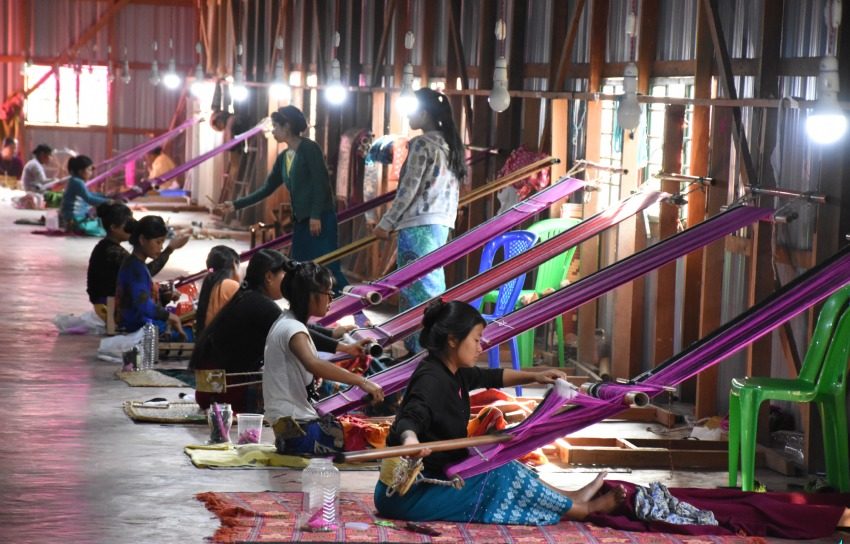

Weaving is an integral part of many tribes and communities in India. In the North East region of India, weaving has a unique traditional value as each tribe has specific designs and patterns unique to their community. The women weavers of this region have established a rich textile tradition that is now well recognised and famous across the globe. Today, these women weavers are not just breadwinners for their families but are running successful businesses and contributing towards making the country Atmanirbhar Bharat.
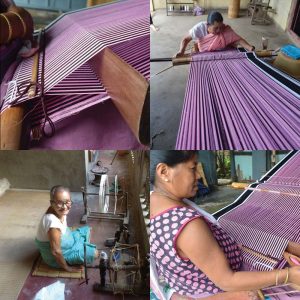 At Maitram village of Imphal West, Manipur, the hum of daily life is punctuated by the clickety-clack of wooden handlooms. “It is part of our custom that women learn to weave. Most of our communities have our traditional attires too. However, in our household, we view weaving as a continuation of our tradition rather than as a business proposition. This is a traditional skill we learned as young girls in our village. We never thought that it can be an income source,” says Susheela, a mother of two.
At Maitram village of Imphal West, Manipur, the hum of daily life is punctuated by the clickety-clack of wooden handlooms. “It is part of our custom that women learn to weave. Most of our communities have our traditional attires too. However, in our household, we view weaving as a continuation of our tradition rather than as a business proposition. This is a traditional skill we learned as young girls in our village. We never thought that it can be an income source,” says Susheela, a mother of two.
The textile industry is the second largest source of employment, after agriculture. Out of the 38.47 lakh adult weavers and allied workers in India, 78 per cent are female, and 22 per cent are male. Weaving is a major source of livelihood for most rural tribal women in industrially-dearth States of North East India. Adult women weavers from the region constitute 49 per cent of total adult women weavers in India.
Susheela never dreamt of earning her livelihood through weaving until her husband was afflicted with paralysis and succumbed to it the same year. She had spent the family’s savings for his treatment. She was devastated as her finances took a nosedive, but she was determined to provide the best for her children.
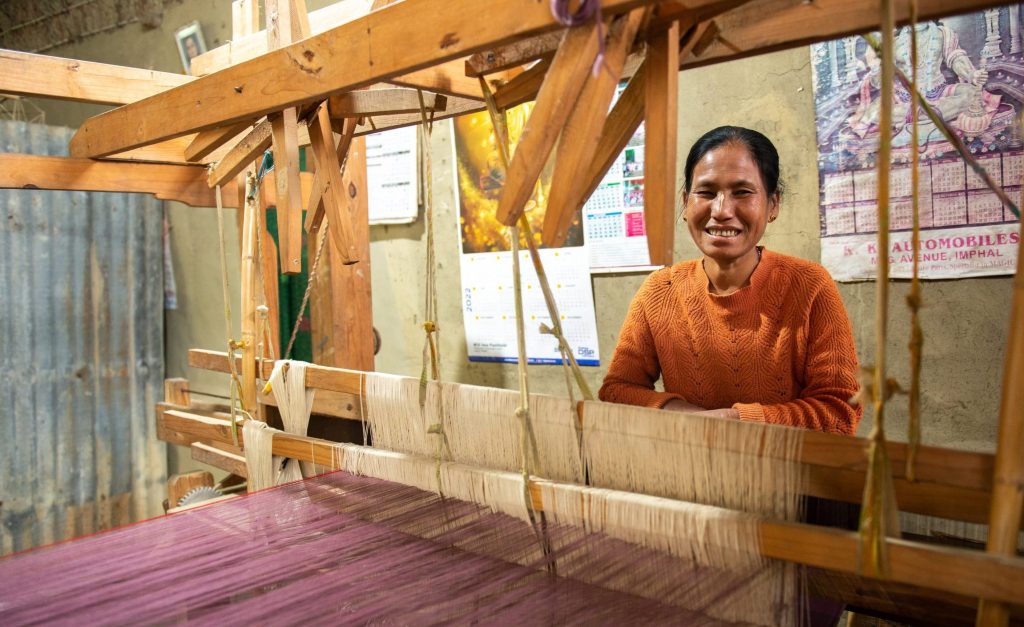 Susheela approached members of the women’s Self-Help Group. They guided her to apply for a loom from World Vision India, an NGO working for children and supporting women through livelihood assistance. She was ecstatic when they approved her request and presented her with a loom. Seven years have passed since that red-letter day, and weaving has become the family’s main source of livelihood.
Susheela approached members of the women’s Self-Help Group. They guided her to apply for a loom from World Vision India, an NGO working for children and supporting women through livelihood assistance. She was ecstatic when they approved her request and presented her with a loom. Seven years have passed since that red-letter day, and weaving has become the family’s main source of livelihood.
The textile industry is the second largest source of employment, after agriculture. Out of the 38.47 lakh adult weavers and allied workers in India, 78 per cent are female, and 22 per cent are male. Weaving is a major source of livelihood for most rural tribal women in industrially-dearth States of North East India. Adult women weavers from the region constitute 49 per cent of total adult women weavers in India. In the subsequent Handloom Census, there is an increase in the number of such women-headed households. For North East India, the first census accounted for 14.6 lakh households, with women involved in weaving, while the third census accounted for 15.1 lakh such households.
Susheela passed on her weaving skills to her daughter. To empower and help her daughter with livelihood opportunities, she bought her a loom. Susheela then converted her extended verandah into a room to accommodate the two looms. The weaving business helped mother and daughter earn around Rs 20,000 per month. It elevated the family’s fortune and improved their standard of living. “I paid for my children’s education and supported my family with this,” says Susheela, gently patting her precious loom.
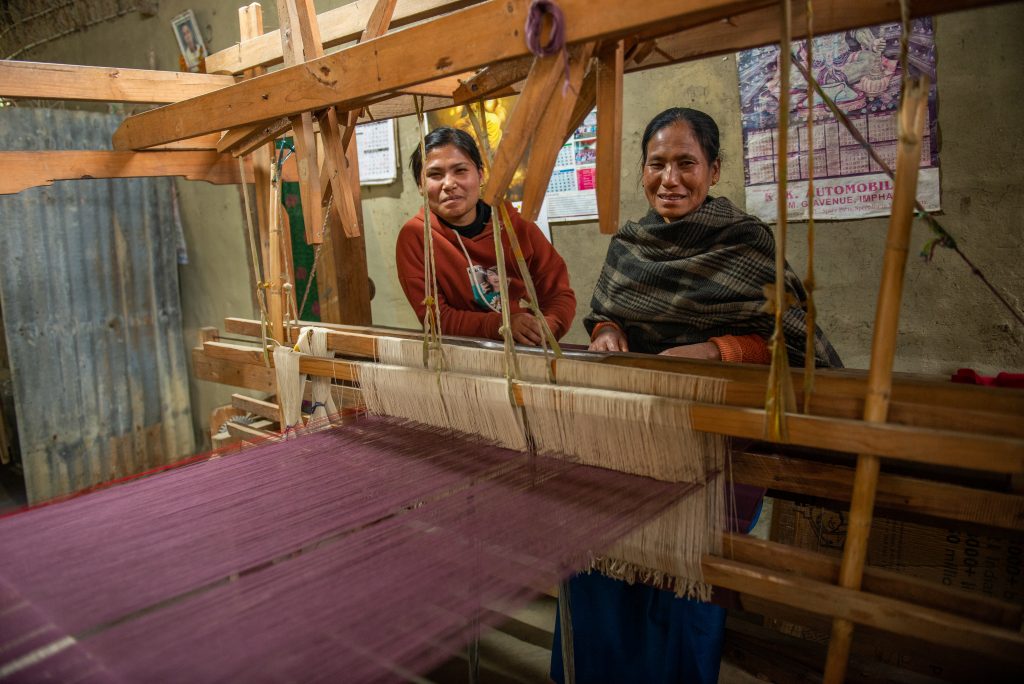
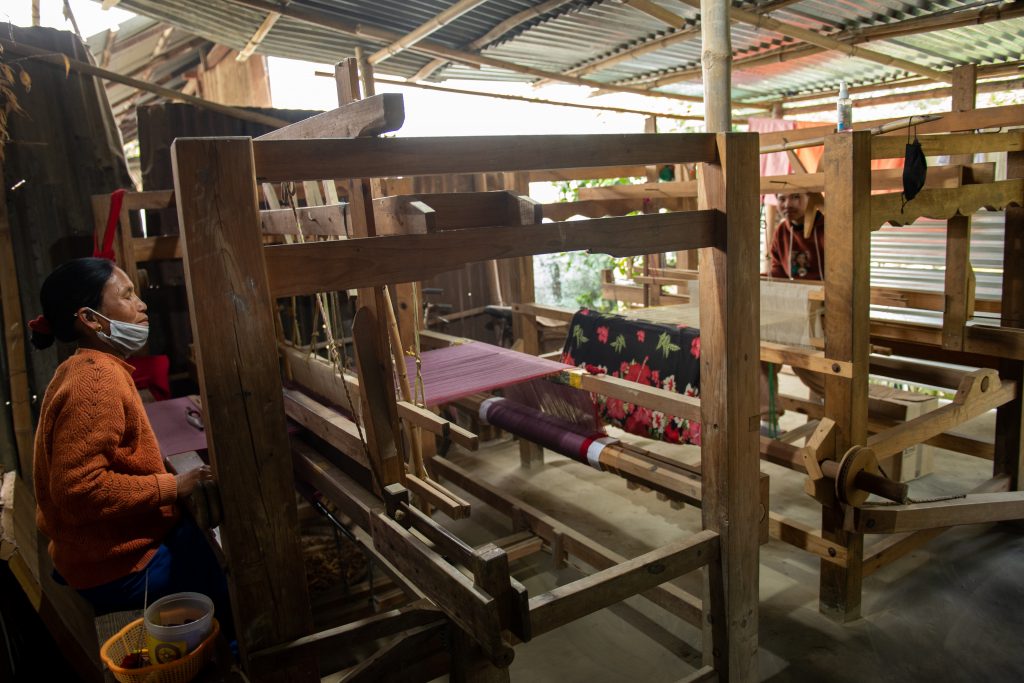
Susheela is part of the Leima Self-Help Group. The Group has ten members, and they voluntarily contribute money each month. They can borrow money from it during an emergency. It is a boon for the members. Leima SHG is part of the Mekola Society, comprising 307 women weavers, and formed collectively by 32 Self Help Groups (SHGs). It was registered under the Manipur Cooperative Society Registration Act 1976 on December 11, 2019. Each member contributed Rs 500 for the registration fee. “We sell our woven materials to the Mekola Society even during the lockdown when there were not many buyers. The amount we received from the sale helped sustained us during the trying times,” Susheela added.
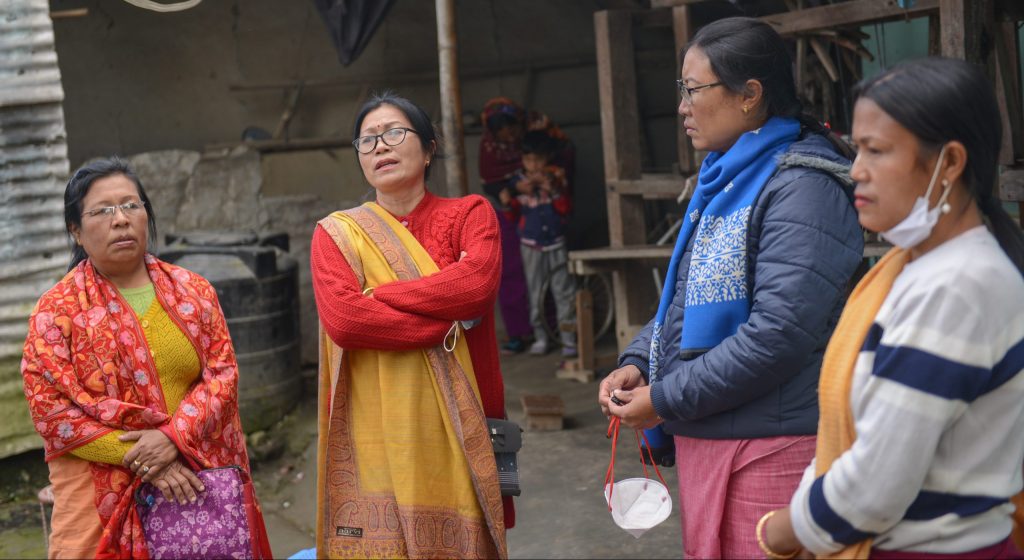
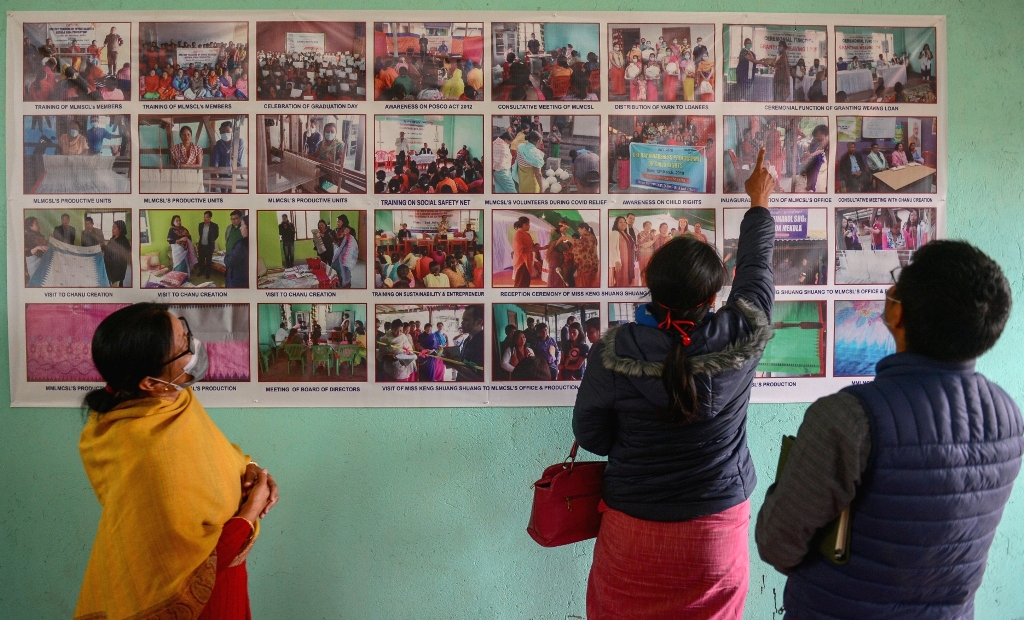
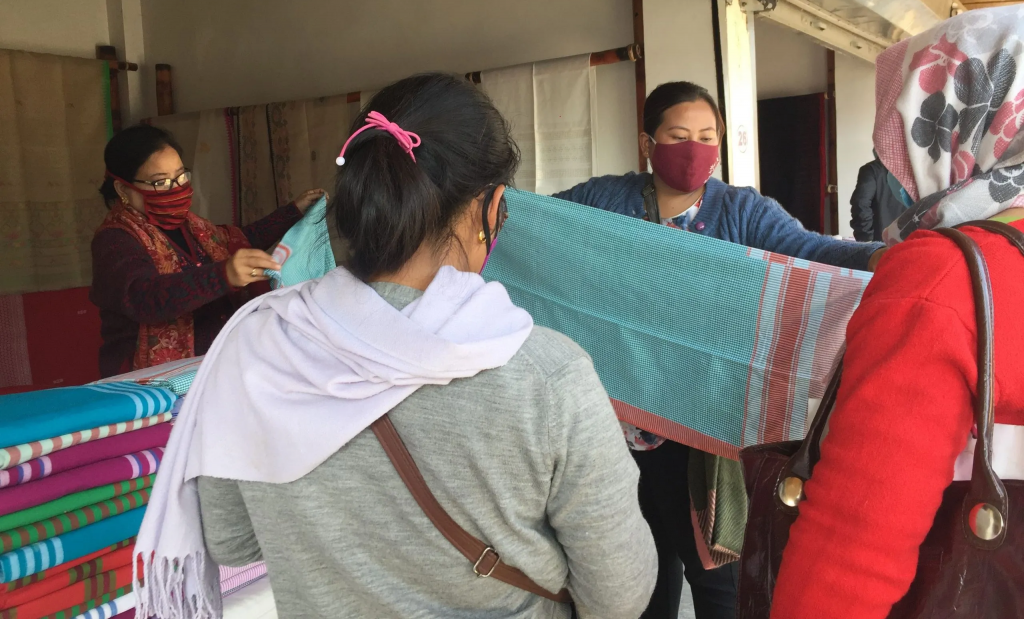 During the pandemic, the middlemen tried to take advantage of the desperate situation faced by the weavers. They pressured them to sell their products for a much lesser price. Seeing this, the Society began buying the products directly from the weavers at the pre-pandemic price and took care of them. “We have tie-ups with a few handloom
During the pandemic, the middlemen tried to take advantage of the desperate situation faced by the weavers. They pressured them to sell their products for a much lesser price. Seeing this, the Society began buying the products directly from the weavers at the pre-pandemic price and took care of them. “We have tie-ups with a few handloom 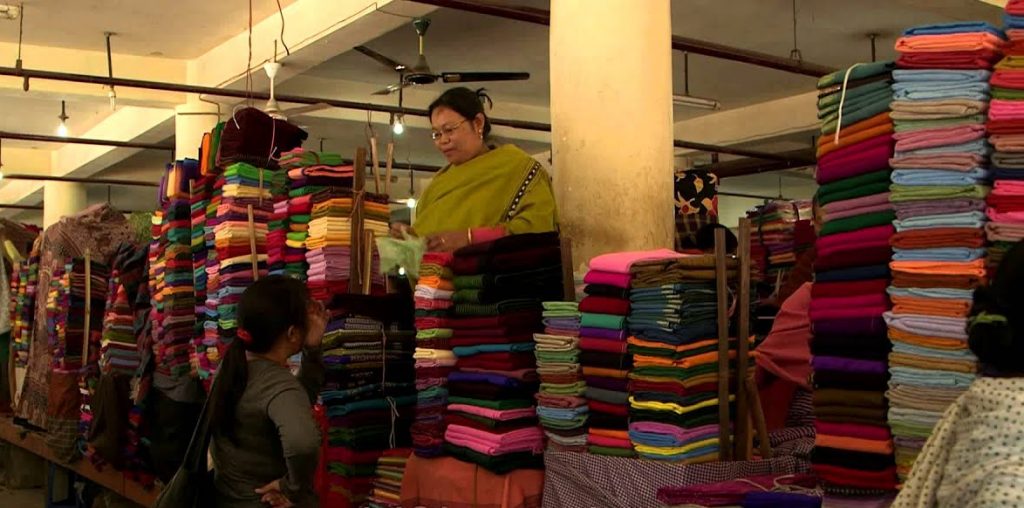 showrooms in Imphal city, and we sell the products directly to them. During the lockdown, we stocked up the phanek (traditional wrap-around) and phi (stall). Once the lockdown was relaxed, we started our business as usual. Although we did not earn a profit margin, we did not let our women weavers down. We took care of them during the crisis,” recalls Kenobala, President of the Mekola Society.
showrooms in Imphal city, and we sell the products directly to them. During the lockdown, we stocked up the phanek (traditional wrap-around) and phi (stall). Once the lockdown was relaxed, we started our business as usual. Although we did not earn a profit margin, we did not let our women weavers down. We took care of them during the crisis,” recalls Kenobala, President of the Mekola Society.
Susheela and her children owe everything to the loom. It has become the symbol of hope and resilience in their toughest times. During the hard-hitting pandemic, they were able to earn and rebuild their dreams. “My son could not work during the lockdown. Daily wage jobs were irregular. The loom cushioned us from the fallout arising due to the pandemic. We were able to survive the darkest period of the past two years,” concludes Susheela.
Many women in Imphal West are now exploring this traditional art of weaving and yarning as a source of livelihood, resulting in the growth of many self-help groups with better access to microcredits. These women are even providing jobs to other women within their community. They travel for exhibitions and shows, further increasing their range of exposure and network.
If Susheela is known for her determination, forty-year-old Jamuna is known for her perseverance. Jamuna is a widow with two sons. She is afflicted with polio, but it did not deter her from living an independent life after her sons got married. In 2020, her health condition deteriorated. She could not continue her roadside eatery shop nor venture out of the house anymore. Out of desperation, she started a small business that would become her livelihood and succour.
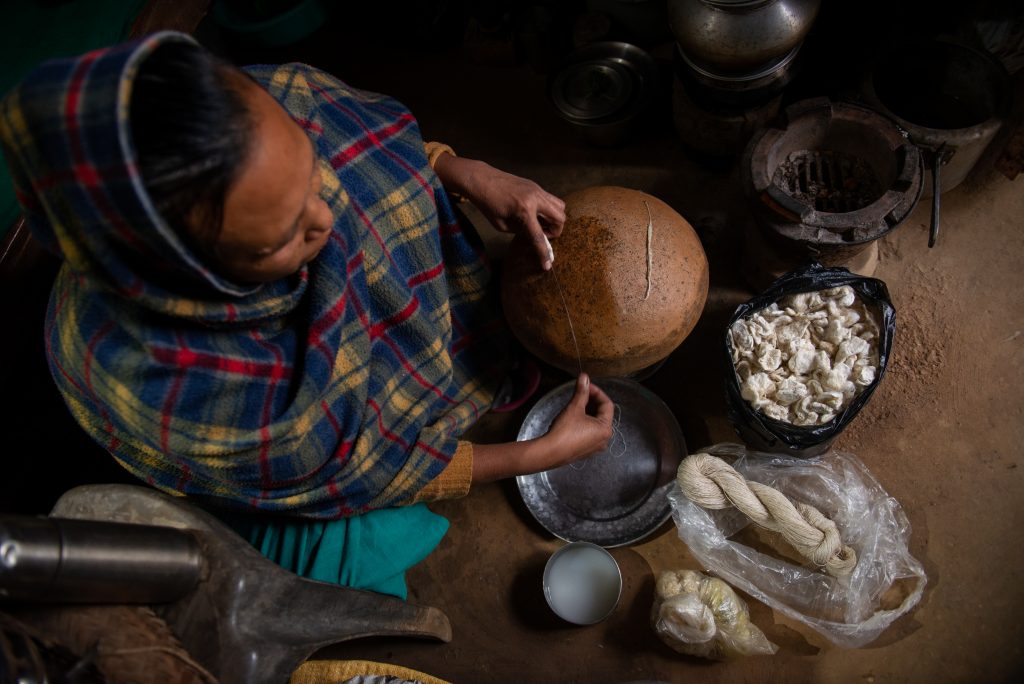 Jamuna learned to weave from her younger sister years back, and this skill came to her rescue at the most vulnerable time of her life. Jamuna reels in the cocoon with her left hand and runs her palm over an earthen pot with her right hand. She uses very few resources and equipment to spin silk thread from the cocoons. It has become her only source of livelihood. “I am very happy (to have this trade) since I cannot work like a normal person,” Jamuna says. She further elaborates on her skill: “Weaving is not just a physical and mental task. One must also put one’s heart into it. If the yarn gets tangled, it has to be unfurled with patience and done so lovingly.”
Jamuna learned to weave from her younger sister years back, and this skill came to her rescue at the most vulnerable time of her life. Jamuna reels in the cocoon with her left hand and runs her palm over an earthen pot with her right hand. She uses very few resources and equipment to spin silk thread from the cocoons. It has become her only source of livelihood. “I am very happy (to have this trade) since I cannot work like a normal person,” Jamuna says. She further elaborates on her skill: “Weaving is not just a physical and mental task. One must also put one’s heart into it. If the yarn gets tangled, it has to be unfurled with patience and done so lovingly.”
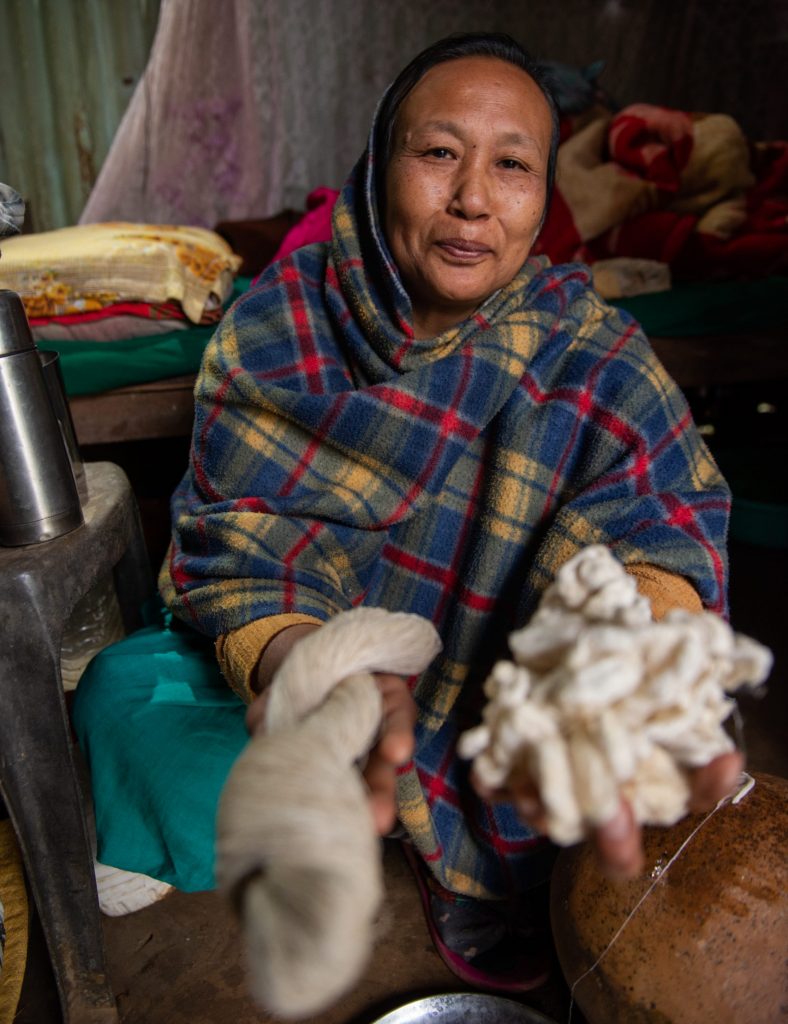 As part of World Vision India’s COVID Adjusted Strategy for Livelihood, Jamuna received 3.7 kgs of cocoon worth Rs 5000. It was heaven-sent as she was at her wit’s end regarding her livelihood and survival. She spun the silk threads using traditional methods – boil the cocoon, let it cool down and then use an earthen pot to spin yarn from it. Though it is a tedious process, this handspun yarn is more expensive and much sought after. She earned a tidy profit of Rs 1200 from every kilogram of the cocoon.
As part of World Vision India’s COVID Adjusted Strategy for Livelihood, Jamuna received 3.7 kgs of cocoon worth Rs 5000. It was heaven-sent as she was at her wit’s end regarding her livelihood and survival. She spun the silk threads using traditional methods – boil the cocoon, let it cool down and then use an earthen pot to spin yarn from it. Though it is a tedious process, this handspun yarn is more expensive and much sought after. She earned a tidy profit of Rs 1200 from every kilogram of the cocoon.
World Vision India has set up 139 All Women Self-Help Groups in Imphal. It is working among 9815 families with 34,483 people in the Imphal West District. As of March 2022, around 25,300 families have benefitted through livelihood assistance from the NGO.
Handloom and textile is the largest cottage industry in Manipur and the second-highest employer next to agriculture. Manipur is the second-largest handloom producer in India after Assam. According to the All India Handloom Census 2019-2020, Ministry of Textile, Government of India, Manipur ranks third with 2.1 lakh weaver households (a third of whom are in the cooperative fold) among the four States that account for 18 lakh weaver households in India. The other States are Assam with 10.9 lakhs, West Bengal with 3.4 lakhs, and Tamil Nadu with 1.7 lakhs. An interesting fact to note is that 94 per cent of weavers in Manipur are women.
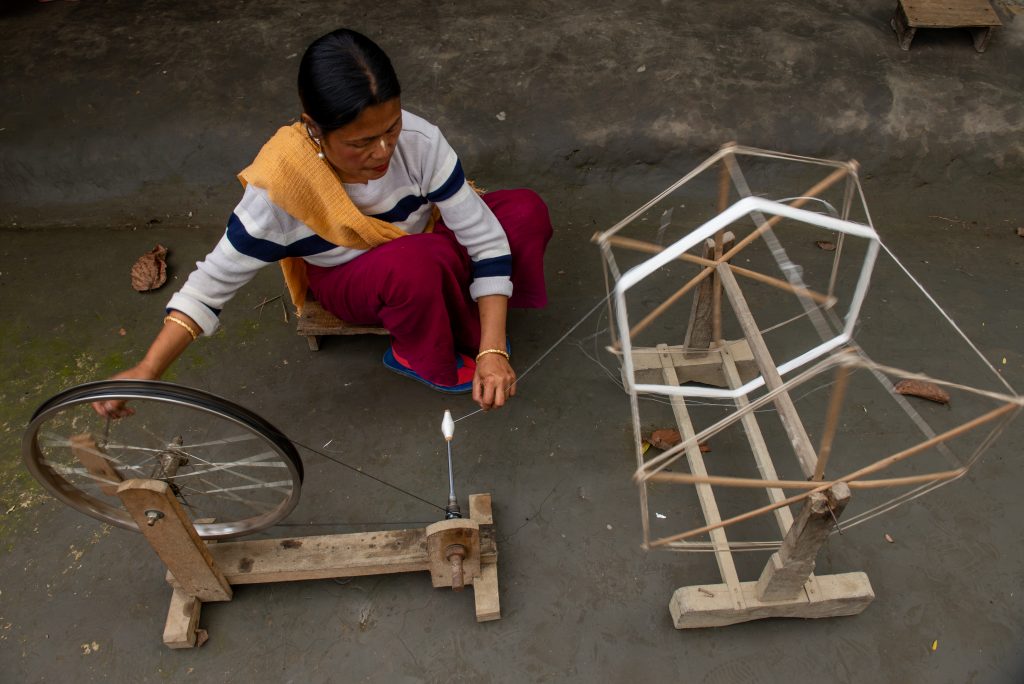
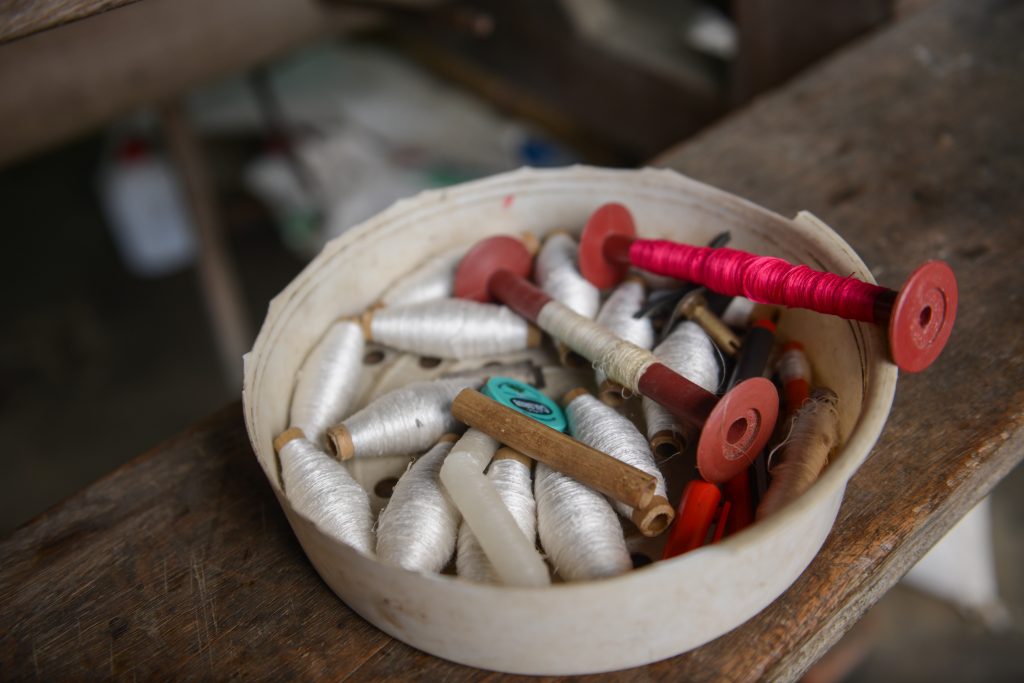
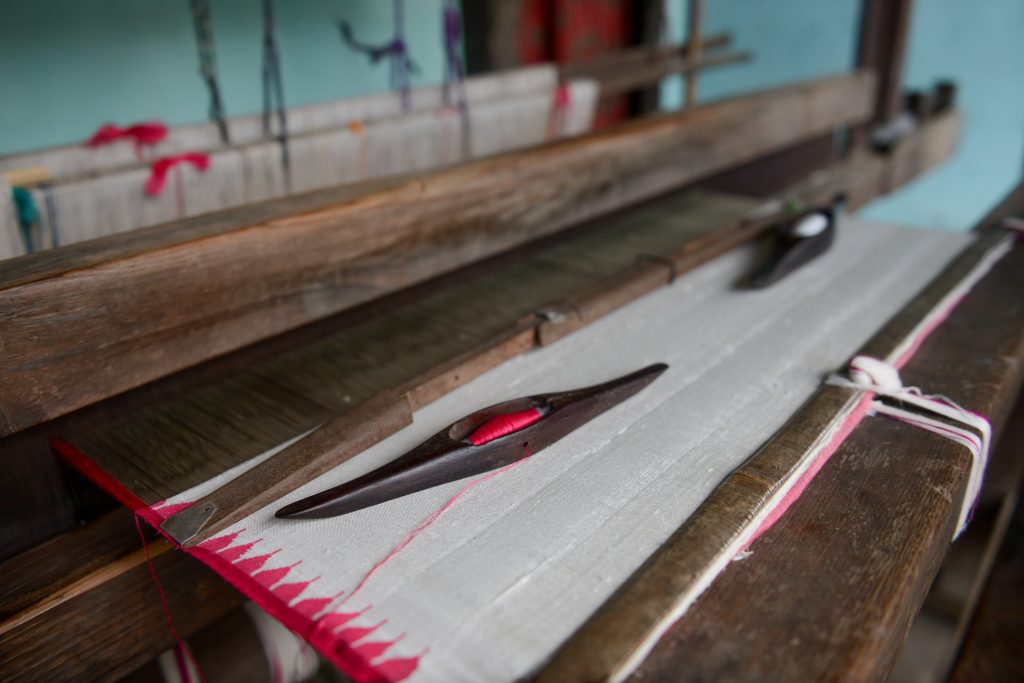

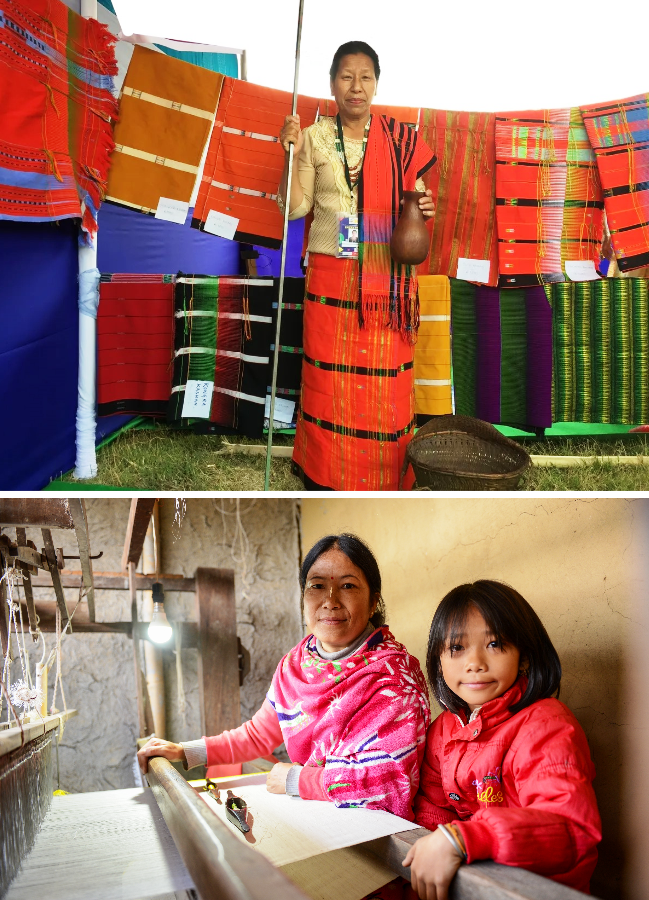 Many women are now exploring this traditional art of weaving and yarning as a source of livelihood, resulting in the growth of many self-help groups with better access to microcredits. They are even providing jobs to other women within their community. They travel for exhibitions and shows, further increasing their range of exposure and network.
Many women are now exploring this traditional art of weaving and yarning as a source of livelihood, resulting in the growth of many self-help groups with better access to microcredits. They are even providing jobs to other women within their community. They travel for exhibitions and shows, further increasing their range of exposure and network.
Seeing their mothers’ resilience, determination and success, young girls are encouraged to carve out career options for themselves, hoping for continued enhancement in livelihood options, and eventually achieving economic independence.

